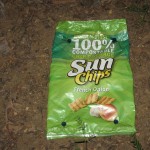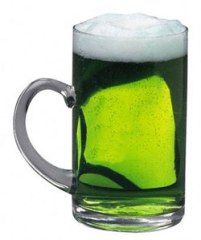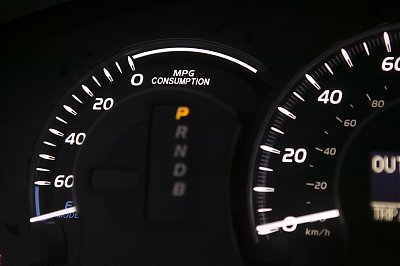Brands We Love: Chipotle
I. love. Chipotle. There, I said it. And no, I’m not referring to the pepper, but the mouth-wateringly delicious Mexican grill.
The best part is, it goes beyond the food. I love the cheekiness of Chipotle’s brand, but the fact that it’s mixed with a “Food With Integrity” mission, I have become the most loyal of brand advocates.
But first, a little history: In 1993, Chipotle was founded by Steve Ellis in Colorado. Ells and his father calculated that the store would need to sell 107 burritos per day to be profitable. After one month, the original restaurant was selling over 1,000 burritos a day.
Chipotle’s menu consists of four simple options: burritos, burrito bowls, tacos and salads. And, four types of protein: chicken, pork carnitas, barbacoa (spicy, shredded beef) or steak (and of course, customers have the ability to make a vegetarian option as well).
Why such a limited menu? Steve Ells has said, “[I]t's important to keep the menu focused, because if you just do a few things, you can ensure that you do them better than anybody else.”
Well put. So, what about the brand?
First and foremost, a little more info on Chipotle’s “Food With Integrity” mission.
Food With Integrity is our commitment to finding the very best ingredients raised with respect for the animals, the environment and the farmers. It means serving the very best sustainably raised food possible with an eye to great taste, great nutrition and great value.
It means that we support and sustain family farmers who respect the land and the animals in their care. It means that whenever possible we use meat from animals raised without the use of antibiotics or added hormones. And it means that we source organic and local produce when practical. And that we use dairy from cows raised without the use of synthetic hormones.
Food With Integrity is a journey that started more than a decade ago and one that will never end.
Quite a bold statement for a fast,casual dining chain.
And then there’s the physical branding. The packaging is irreverent and hilarious. The cups and bags tell a story, providing a little entertainment while you nosh on your burrito.
And, for the design nerds out there, you’ll find “Lorem ipsum” placeholder text on the larger carryout bags. (Huge props go out to Sequence, the creative development agency responsible for Chipotle’s quirky brand executions.)
In 2011, Chipotle released a short film entitled, “Back to the Start.” The film, by film-maker Johnny Kelly, depicts the life of a farmer as he slowly turns his family farm into an industrial animal factory before seeing the errors of his ways and opting for a more sustainable future. Both the film and the soundtrack were commissioned by Chipotle to emphasize the importance of developing a sustainable food system.
The video reached more than four million views on YouTube when it aired, in its entirety (2 minutes and 20 seconds), during the 2012 Grammy Awards. At present, the video has a whopping 7.3 million views.
Chipotle has even launched a free, all-day food and music festival called Cultivate. Last year’s event in Chicago, paired chefs such as Amanda Freitag and Jonathan Waxman with local farmers for cooking demos, while CAA Marketing helped line up bands like Calexico to headline. As festivalgoers roamed through the entertainment, they discovered tents that informed them about shocking but common industrial-farming practices. This year, Cultivate will return to Chicago, but is also expanding, with events in San Francisco and Denver.
And the momentum continues…Last year, Chipotle ranked 34th on Fast Company’s list of The World’s 50 Most Innovative Companies. Why? “For exploding all the rules of fast food.” So, thank you, Chipotle, for continuing to innovate and push us out of our fast food comfort zone. I am genuinely excited to see what’s in store (and am now, of course, craving a burrito bowl with chips and guac).
Sources
“Feeding frenzy,” Rocky Mountain News, Janet Forgrieve, Feb. 18, 2006
“Chipotle: Fast Food with Integrity,” Businessweek, https://goo.gl/l73fN
“Food With Integrity,” Chipotle.com, https://goo.gl/5SP20
“The World’s 50 Most Innovative Companies,” Fast Company, Danielle Saks, https://goo.gl/7H771
The Red, White, and Blue is Going Green!

By now everyone who is keeping up with the latest news on the Olympics is sure to know that team USA’s clothing isn’t very American. News broke recently that the clothing was actually manufactured in China. This deeply upset many Americans due to the fact that the textile industry in the United States continues to struggle, and the Olympic clothing line would have been a great boost to the economy and morale. Ralph Lauren, designer of the uniforms, quickly issued a statement late last week saying that the clothing for the opening and closing ceremonies for the next Olympics, the winter games taking place in Sochi, Russia, will indeed be made in the United States. While it might be too little too late to fix the situation in the mind of Americans, Team USA sponsors are looking for every available opportunity to promote the United States in a positive light.
Regardless of the Olympians casual clothing, there is good news when it comes to the athletic uniforms they will be sporting in the 2012 summer games. With recent advances in technology and the growing desire for everything we produce to be environmentally friendly in some way, the athletic gear for Olympians has undergone revolutionary changes since games past. Nike, designer of the athletic uniforms for many countries in the games, is one sponsor that has especially taken this to heart. In order to boost both Team USA and the United States with positive publicity, they have come up with extremely innovative ways to make sure that the uniforms worn during the games are environmentally friendly in order to distinguish us essentially as our own brand.
Among some of the cool new features Nike has planned for the Olympic athletes is a ground-breaking cleat that promises to deliver lightweight performance and high-speed control for soccer players in game situations. The Nike GS (short for Green Speed) is what Nike is calling its lightest, fastest, and greenest cleat ever. Every single element of the shoe was purposefully designed to reduce weight and waste, making it the lightest shoe Nike has ever created; only 160 grams for a size nine. The shoe features mostly recycled and renewable materials. For example, the sock lining is made of 100% recycled castor beans. “When you can deliver a boot that combines high end performance and a low environmental footprint that’s a winning proposition for players and planet” said Andy Caine, global design director for Nike Soccer. You’ll be able to catch a glimpse of these amazing cleats in action during the Olympics when they will be worn by Nike sponsored athletes from around the world.
The soccer pitch isn’t the only place you’ll be able to spot state-of-the-art equipment however. The United States Men’s basketball team will be wearing uniforms that were specially crafted by Nike to be some of the most revolutionary basketball uniforms ever. Each white jersey is made with 96% recycled polyester and an average of 22 recycled bottles, making it 58% lighter than the basketball uniforms worn in the Beijing Olympics and the lightest national team uniform ever. The difference in weight from past uniforms adds up to roughly a full can of soda! According to Nike, the shoes for the basketball players will also be innovative, being equipped with special new features. The shoes will feature sensors that can measure how high the players jump and transmit the results right to the player’s smart phone. Nike also designed FuelBand, a bracelet designed for all Olympians that measures their different daily activities, including how many steps they take to how many calories they burn each day. It will be interesting to see if all of this new and improved gear will help our Olympians perform better.
While the above mentioned efforts by Nike prove to be extremely fascinating and fun to learn about, it’s easy to forget that the Olympics are not just about finding ways to ensure that our athletes perform better than those from other countries. As one of the biggest events in the world, each country essentially becomes a brand of its own and how they promote it is entirely up to them. Our own country’s image in the Olympics comes down to much more than the clothes and uniforms. Supporting Team USA is about national pride and what we as a country believe is important. By incorporating eco-friendly and technologically advanced themes in many aspects of this year’s games we are showing the rest of the world that being sustainable and green is something that is important to us and is a value that we stand behind collectively as a country. It gives viewers around the world a more personal look into what it means to be American and in turn will make it easier for them to relate to our country as a brand. Environmental enthusiasts and Olympic fans everywhere are sure to agree that green looks good, but that the meaning behind it is what's most important.
Contributed by Nicole Juliano
SunChips Bag Gets Noise Complaint

When Frito-Lay launched a biodegradable SunChips bag, eco-friendly snack eaters cheered! But, it seems as though those cheers were drowned out by the 100% compostable bag's noisy packaging material. After about 18 months, declining sales and negative consumer feedback, Frito-Lay is pulling the loud snack bags from shelves and returning to the former, quieter bags which cannot be recycled.
While the new bags are undoubtedly louder and a little annoying, is 10 seconds of noise while you open the bag really that big of a deal? It is according to over 44,000 Facebook fans of the "Sorry But I Can't Hear You Over This SunChips Bag" page. I guess the bags weren't as loud as they thought if Frito-Lay heard their complaints.
The SunChips brand centers around health and nature. Their website promotes a "healthier you" and a "healthier planet." SunChips boasts that it is committed to environmental sustainability and changing the world. While removing the bags seems like a step in the opposite direction, USA Today reports that the company is working on creating a new, quieter eco-friendly bag.
Though I'm all for compromise, I think consumers should consider that the sounds of garbage trucks taking the old bags to the dump, or the sounds of children running into the kitchen for a snack are far louder than new bags themselves.
Green Brands Put to the Test

We've talked a lot about how brands are trying to add "Green" to their corporate color palette, sometimes with real, valuable initiatives and sometimes with just words. (Green: Who Can Claim It? and Greenwashing) So in honor of this Earth Day, the 40th Anniversary actually, we'd like put some of those brands to the test to "verdify" how green they really are.
Last month, SunChips introduced the world's first fully-compostable chip bag. The new bags, made of plant-based materials, should fully decompose in 14 weeks (under typical hot composting conditions). A few weeks later, Snyder's of Hanover announced it too would be using sustainable packaging (on its organic line of pretzels).
I don't have a compost pile, much less the perfectly mixed 1-2-2-2-1 “hot" compost that SunChips recommends, but I do find the random scrap of trash in my yard after trash day. Would the bags eventually decompose in my yard or on the side of the road? We plan to find out.
For our Earth Day experiment, we have staked one of these composting bags to the ground to simulate errant trash. We will photograph our progress and share the results on the blog.
Green Beer to Save the World
 ......................................................................................................................................................................
......................................................................................................................................................................
This week, green dye and food coloring fly off the shelf to "vertify" everything from frosting to the Chicago River itself. Green beer is a popular St. Patrick's Day libation, but some brewers are taking a different turn and working to be green all year long. This time we mean eco-friendly green.
Breweries are going green by recycling spent grains, reducing packaging, or boosting the energy efficiency of the brew house.
Adnams, a UK brewery, has gone so far with one beer that it has received the endorsement of TheRead more
Climate Confusion
Here’s the scene: It’s an unseasonably cold day. You have just completed a freezing run through the parking lot and have caught the elevator going up. The stranger next to you, visibly chilly, remarks, “so much for global warming, eh?”
I can’t tell you how many times this exact scenario has happened to me, which leads me to believe one of two things: 1. Strangers like to talk to me, or 2. The name Global Warming is fundamentally misleading. (Let’s just assume it’s the latter.)
Apparently the same events seem to happen to Al Gore, as urban dictionary has added “The Gore Effect” to its lexicon, meaning “the phenomenon that leads to unseasonably cold temperatures whenever Al Gore visits an area to discuss global warming.”
So what’s the deal?Read more
Good Guide
One of our most influential tools in a capitalist society is our power as consumers. When you choose to buy something, you are not only supporting the brand, but the production of that product, and the company as a whole.
Guides such as Consumer Reports have long existed to provide consumers with detailed information and reviews on product performance. GoodGuide takes that notion a step further, according to their website, providing “the world's largest and most reliable source of information on the health, environmental, and social impacts of the products in your home.”
With a visit to GoodGuide, you can browse items ranked in three categories: Health Performance (which includes adverse health effects and safety), Environmental Performance (which includes energy and climate impact, as well as use of hazardous materials), and Social Performance (which measures company philanthropy, labor and human rights, and customer satisfaction).
So the next time you are debating which brand of makeup or detergent to buy, take a quick look online—what you read may just make the decision for you.
Contributed by: Maghan Cook
Word of the day: Hypermiler

......................................................................................................................................................................
According to Wikipedia, hypermilers are drivers who exceed the United States Environmental Protection Agency (EPA) estimated fuel efficiency on their vehicles by modifying their driving habits.
The energy in fuel consumed in driving is lost in many ways, including engine inefficiency, aerodynamic drag, rolling friction, and kinetic energy lost to braking. Driver behavior can influence all of these factors to reduce fuel consumption. WIRED magazine discusses the subject at length.
Related terms:
Nempimania (also Nenpimania) is an obsession with getting the best fuel economy possible from a hybrid car. It is derived from the Japanese "nempi" meaning fuel economy, and "mania".
Ecodriving is a term used in Europe to name initiatives which support energy efficient use of vehicles. Check out this site for golden rules on ecodriving.
Contributed by: Maghan Cook
Don't Drive Day!
Tomorrow, August 13 is Don't Drive Day in Charlotte. This Mecklenburg County Air Quality program initiative aims to limit and minimize air pollution and promote education and awareness around the community.
So take the Lynx, ride a bike, or a vegetable cart, but whatever you do, don’t drive! And then be sure to email [email protected] to explain how you got to work, and to be eligible for prizes!!
Think Before You Ink!

......................................................................................................................................................................
Addison Whitney employees are taking steps to make the office lean and green. Kristin Everidge and Maghan Cook enlisted the help of intern Kelsey Bryant, from Elon University, to design a poster encouraging everyone to reduce, reuse, and recycle print paper. The posters are displayed at each printer station with instructions on how to print on the reverse of unneeded printouts and a bin for collecting scrap paper.
![]()
Want to use this poster for your workspace too? Just follow these simple instructions.
1. Download the poster and accompanying instructions sheet
2. Open using Adobe Reader
3. Print the large format poster (page 1) on 11” x 17” (Tabloid) or scale to print on 8.5” x 11” (US Letter)
4. Print instruction sheet (page 2) on 8.5” x 11” (US Letter)
5. Hang by your printers and start to make a difference!
This resource will also be available on the DOWNLOADS tab on brand salsa.



